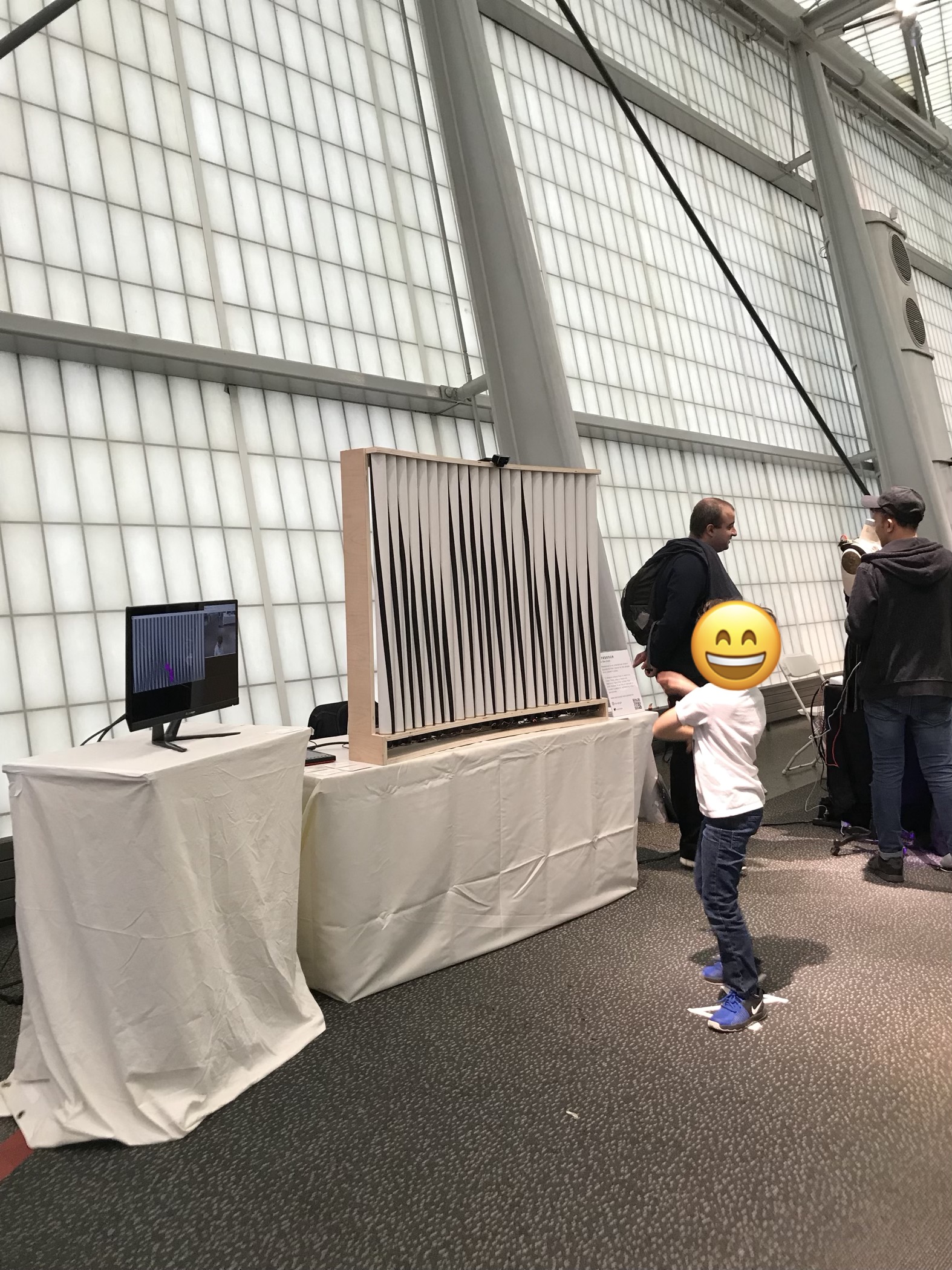This weekend, I went to Maker Faire (for the first time!), and I had the chance to watch both adults and children play with several interactive technologies, but I was especially interested in their interactions with artful pieces. One such piece was a fellow ITP student's project called Presence. The project consisted of a series of tubes that reacted to the presence (and pose) of the people that came before it. The tubes were each marked with black diagonals that allowed participants to have a clear sense of the tubes' rotation in reaction to their own movements.
It was really interesting to watch people of all ages interact with the piece. Kids, unsurprisingly, approached it with the most enthusiasm (dancing or just shaking their entire torsos). Adults tended to make more intentional movements with their arms (though a few of them danced). The primary interaction point was the series of rotating tubes, but just off to the side, a computer screen showed how PoseNet had mapped the physicality and movement of the people in front of the piece. Some people actively watched both the sculpture and the monitor, as though hoping to map their own movememnts to what was happening in each. Others seemed to ignore it entirely. Though the piece allowed for plenty of "feedback" and it seemed easy enough to make the sculpture do something, it looked harder to interpret its actions. Though our readings in The Design of Everyday Things have some stringent ideas about the clarity of purpose necessary in "good" design, I think the requirements of an interactive art piece are different than other types of interactive objects. I thought this design was especially successful in nudging participants into a more playful mode of being, and with its minimal aesthetic, perhaps encouraging participants to approach with a certain openness to an experience made as much by their own participation as the piece itself.

Update: Added a link to the project and a photo.
